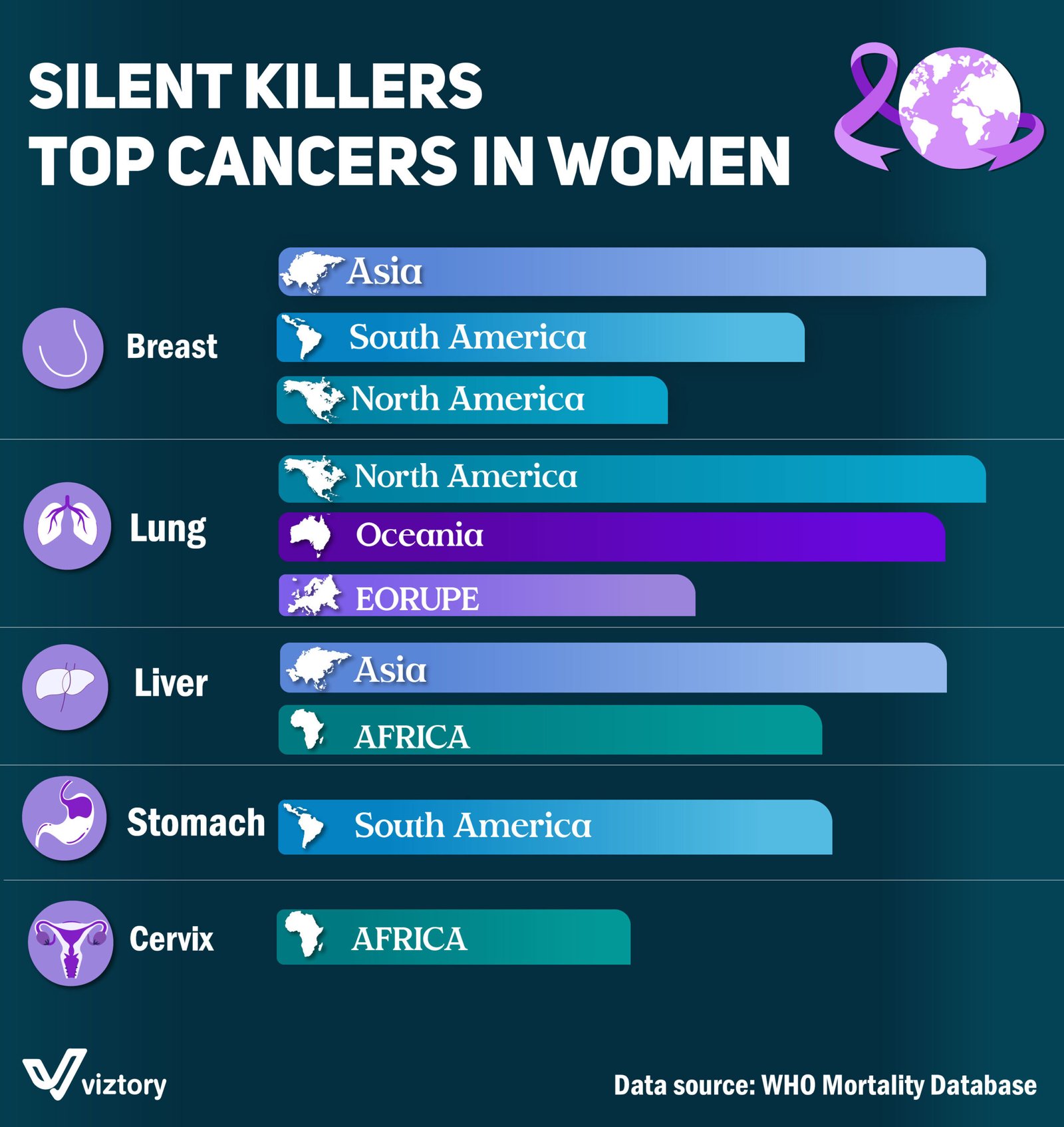Silent Killers: Top Cancers in Women
-
Jan, Thu, 2025
Cancer remains a major health challenge worldwide, particularly among women. The visualization highlights the leading cancer types affecting women across various continents, based on data sourced from the WHO Mortality Database. It emphasizes regional differences in the prevalence of specific cancer types, illustrating the importance of tailored prevention and treatment strategies.
Breast Cancer
Breast cancer is the most prominent cancer affecting women globally. It has a significant prevalence in Asia, South America, and North America. The high rates in these regions underscore the importance of early detection programs, awareness campaigns, and advancements in treatment.
Lung Cancer
Lung cancer poses a serious threat, particularly in North America, Oceania, and Europe. The widespread prevalence in these regions can often be linked to smoking habits, environmental factors, and industrial exposure. Strategies like anti-smoking initiatives and air quality improvement are critical in combating this disease.
Liver Cancer
Liver cancer is notably prevalent in Asia and Africa. Factors such as hepatitis infections, alcohol consumption, and aflatoxin exposure play significant roles. These regions could benefit greatly from vaccination programs against hepatitis and efforts to reduce liver cancer risk factors.
Stomach Cancer
Stomach cancer is highlighted as a leading cancer in South America. This is often associated with dietary habits, Helicobacter pylori infections, and access to healthcare. Public health measures focusing on dietary changes and early diagnosis are essential in reducing its burden.
Cervical Cancer
Cervical cancer is a major concern in Africa. This cancer is closely linked to human papillomavirus (HPV) infections, which can be mitigated through vaccination programs and routine screening. Expanding access to HPV vaccines and Pap smear tests can significantly reduce its incidence and mortality.
Conclusion
This visualization reflects the urgent need for region-specific cancer control strategies to address the unique challenges posed by each type of cancer. Through awareness, early detection, and better healthcare access, significant strides can be made in reducing cancer-related mortality among women globally.

